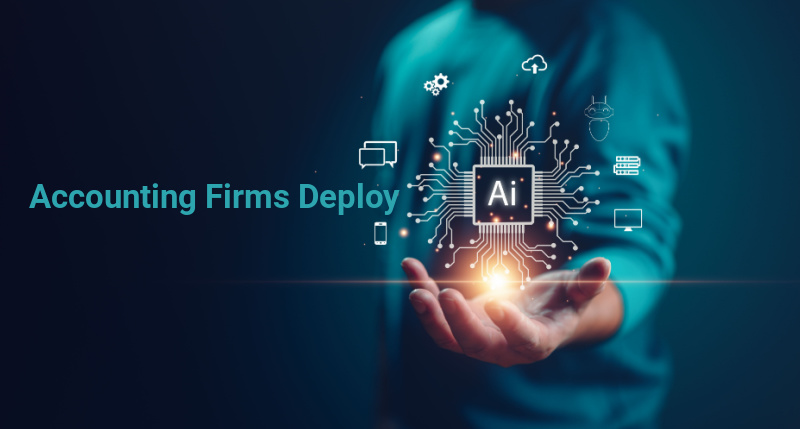Unless you’ve been under a very large rock for the entire year, you’ve probably heard lots about artificial intelligence (AI) and how it’s going to completely revolutionize many different professional fields. Reactions are mixed: some embrace the rapid development of AI as the next frontier in technology, viewing it as a milestone like the personal computer or the internet.
Others are more concerned about the possibility of AI replacing people’s jobs. For those in that second group, the good news is AI isn’t currently anywhere near effective enough to completely replace a human in most professions, including accounting. But that doesn’t mean you should just ignore the AI movement and go about your business normally.
If you strategize and deploy it properly, artificial intelligence available right now can provide a big boost to your firm when it comes to time and billing tracking. Here’s a quick guide on how to get started:
1. Choose a platform or tool
There are many different options when it comes to AI tools for accounting firms. Two of the major players are OpenAI’s ChatGPT and Google’s Bard, language model AI tools that are trained to learn by analyzing massive sets of text and identifying patterns.
In 2023, other AI platforms are being released and announced all the time. Meta’s recently-announced Llama 2 platform and Microsoft’s Bing Chat Enterprise software are two examples. Plenty of smaller tech companies are jumping in too. There’s no lack of options, so be sure to spend enough time during your search and identify the particular traits important for your needs.
2. Allow AI to learn with input data
Once you’ve settled on a particular kind of platform to use, the next step is helping it learn. You can do this in a number of ways depending on the context – for example, if you wanted to write a client check-in email, you could input a few past examples written by someone on the team for learning purposes.This can apply to anything, from hours your team spends on a certain client task to templates like monthly statements, letters of engagement, and requests for documents. For time and billing purposes, provide all relevant hourly logs and work time statements. When you’ve provided enough information, the platform will be able to create these standardized documents for you, saving a lot of manual time and effort.
Most platforms can handle basic customizations as long as you are able to write the correct prompt. For example, you may prompt an AI language model: “Write me a friendly, professional email checking in on a former client named John Smith,” or “Generate an invoice for May’s audit services for Client X.” While you still should have a human set of eyes finalizing these items, if you have trained your AI tool properly it should be able to handle much of the monotonous, repetitive elements.
3. Use predictive analytics to identify areas for improvements
Not only will AI be able to learn based on previous documents and account statements, it can use this information to provide a forecast of what’s most likely to happen in the future. This is especially true if you’ve been able to provide time and billing data over a relatively long time period.
An AI tool can help you find patterns in hours logged and billing protocols so that your firm can work on improving a particular service that’s become inefficient. They can even help you identify date and day patterns related to your firm so you have a better understanding of your team’s work patterns. This is critical when it comes to internal management of the team.
From a sales and growth perspective, artificial intelligence tools can look at the most efficient projects based on utilization rates and hours billed to clients. This will allow you to pursue the clients that will provide maximum return on investment in terms of revenue, making it easier to meet growth goals.
4. Periodically evaluate AI success
No matter what kind of AI platform you decide to work with, the current crop of technology requires a decent amount of human input. Smaller accounting firms might handle this at the highest levels, but some companies are choosing to let tech departments research and invest time into AI solutions.
However it happens, it’s also important to determine whether or not this investment of time and money has been worth it. Your firm has to carve out some resources to evaluate how well AI is working based on improvements to key performance indicators (KPIs) against the time and money invested.
Final thoughts on AI for accounting firm time and billing
Though the technology hasn’t quite allowed us to turn over all our work to artificial intelligence, we are certainly at the point where most companies can find strategic ways to benefit from AI. This includes accounting firms, who may find that machine learning capabilities help them more quickly handle monotonous, repetitive tasks and focus their work on the most rewarding efforts.
The best AI tools will also be able to integrate with a comprehensive suite for accounting practice management so that you can seamlessly integrate technology that helps achieve more efficient internal operations and better profit margins on accounting clients.
.png?width=150&height=63&name=TWRlogo-regmark_blueblack%20(1).png)
.png)










Do you have questions about this article? Email us and let us know > info@woodard.com
Comments: